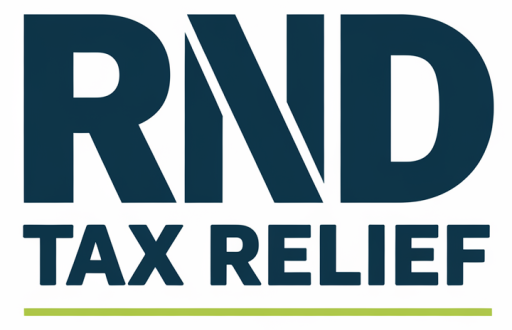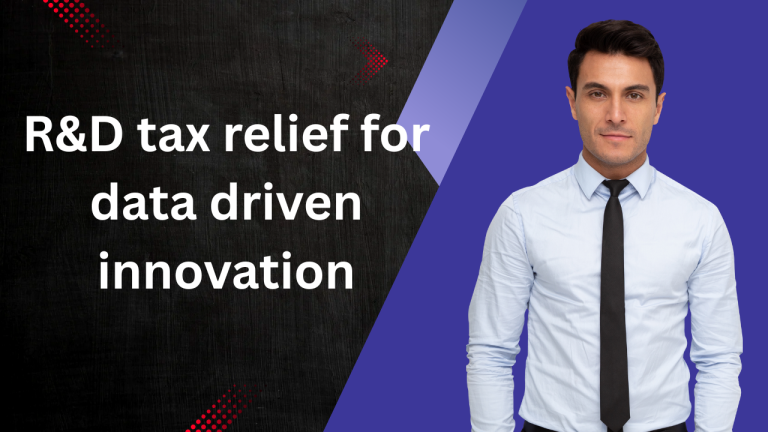R&D Tax Relief for AI: Maximising Claims for Artificial Intelligence Projects
Are you developing artificial intelligence solutions but not claiming the tax relief you’re entitled to? You could be missing out on substantial funding for your innovations. UK businesses at the forefront of AI development can recover up to 33% of their R&D tax relief costs. Let’s explore how your AI projects qualify and how to maximise your claims.

Understanding R&D Tax Relief for AI Development
What is R&D Tax Relief?
R&D tax relief is a government incentive designed to encourage innovation across UK industries. It allows companies to reclaim a percentage of their development costs, either as a corporation tax reduction or as a cash payment. For AI projects, this can mean significant financial support for your technological advancements.
The scheme rewards companies solving technical uncertainties through innovative solutions. AI development, with its inherent technical challenges, often sits perfectly within HMRC’s R&D tax relief guidance definition of qualifying R&D activity.
Why AI Development Qualifies for R&D Relief
AI development typically involves solving complex technical problems with no readily deducible solutions. This perfectly aligns with HMRC‘s core requirement for R&D tax relief: overcoming technical uncertainties through systematic investigation.
When you’re training algorithms, dealing with unpredictable data patterns, or creating new computational methods, you’re likely engaged in qualifying R&D work. The experimental nature of AI development testing, iterating, and refining solutions makes these projects strong candidates for relief, especially in the technology sector.
![AI development technical challenges illustration – suggested image placement]
Qualifying AI Activities for R&D Tax Relief
Not all AI work qualifies for tax relief. Understanding which activities HMRC recognises helps ensure successful claims. Here’s a breakdown of the main qualifying areas:
Machine Learning and Deep Learning Tax Relief
Machine learning model development and training activities typically qualify for R&D tax relief. This includes:
- Creating new algorithms or substantially improving existing ones
- Developing novel feature extraction techniques
- Designing more efficient training methodologies
- Addressing overfitting or underfitting challenges
- Creating systems that improve with experience in new ways
Projects involving neural networks, especially those tackling previously unsolvable problems, present strong cases for R&D claims. The costs of computational resources used for training can also be included as part of your software development tax relief claim.
Natural Language Processing R&D Claims
Natural Language Processing projects often qualify when they involve:
- Creating new methods for language understanding
- Developing solutions for language-specific challenges
- Building systems that handle ambiguity or context
- Improving sentiment analysis techniques
- Creating more accurate translation systems
The technical challenges in making machines understand human communication represent classic R&D work. Costs associated with data collection, annotation, model development, and testing can all potentially qualify for R&D tax credits.
Computer Vision and Image Recognition
Computer vision projects frequently qualify for relief when they involve:
- Developing new object detection algorithms
- Creating systems that work in challenging environments
- Improving classification accuracy
- Building real-time processing capabilities
- Addressing novel pattern recognition challenges
The costs of developing datasets, annotation, model training, and testing efficiency can all be included in your claim. These innovations are well-supported by programmes from UK Research and Innovation and qualify for tax incentives.
Robotic Process Automation (RPA)
RPA projects may qualify when they:
- Solve complex automation challenges
- Create systems that handle exceptions intelligently
- Develop new methods for process understanding
- Build solutions that adapt to changing conditions
- Integrate multiple systems in novel ways
The experimental work in teaching machines to perform complex human tasks often represents qualifying R&D activity.
How to Claim R&D Tax Relief for AI Projects
Making a successful claim requires careful preparation and documentation. Here’s our R&D claim process step-by-step guide:
- Identify qualifying projects – Review all your AI initiatives to determine which ones involve technical uncertainty and innovation
- Document technical challenges – Record the specific uncertainties you faced and how you attempted to resolve them
- Track relevant costs – Monitor staff time, subcontractor fees, consumables, and software costs related to R&D
- Prepare technical narratives – Develop clear explanations of your projects in terms HMRC will recognise as R&D
- Submit your claim – File with your Corporation Tax return or amend previous returns (going back up to two accounting periods) according to R&D tax relief legislation
Documentation Required for AI R&D Claims
Strong claims require robust evidence. Keep records of:
- Project planning documents showing technical objectives
- Meeting notes discussing technical challenges
- Design documents and technical specifications
- Testing results demonstrating iteration and improvement
- Staff timesheets showing R&D activities
- Contracts with external specialists
- Invoices for R&D-related resources
The better your documentation, the stronger your claim will be. Start collecting evidence early in your development process rather than scrambling at tax time. For more detailed guidance, consult our R&D tax relief guides.
HMRC Guidelines for AI R&D Tax Relief
HMRC evaluates AI claims based on whether your work:
- Seeks to achieve a scientific or technological advance
- Addresses scientific or technological uncertainty
- Uses a systematic approach to overcome challenges
- Could not be easily worked out by a competent professional in the field
Your claim needs to demonstrate how your AI development meets these criteria through clear technical narratives. Focus on explaining the uncertainties you faced rather than just describing the product features.
Common Pitfalls When Claiming R&D Tax Relief for AI
Many AI companies make avoidable mistakes that limit their claims. Watch out for these common issues:
- Failing to identify all qualifying activities – Many routine development tasks in AI actually qualify
- Not claiming all eligible costs – Staff costs, subcontractor fees, and computational resources are often underreported
- Poor technical documentation – Insufficient evidence of technical challenges and your approach to solving them
- Missing the deadline – Claims must be submitted within two years of the end of the relevant accounting period
- Focusing on commercial rather than technical innovation – HMRC rewards technical advancement, not just new business models
Understanding these pitfalls helps you maximise your claim while avoiding HMRC inquiries. Getting expert support often pays for itself by identifying additional qualifying activities and costs. For answers to common questions, see our frequently asked questions page.
The Institute of Chartered Accountants recommends having professional guidance when preparing complex R&D claims, particularly for emerging technologies like AI.
Case Study 1: AI-Powered Financial Analysis Tool
A London fintech startup developed a machine learning system to detect fraudulent transactions. Their key R&D challenges included:
- Creating algorithms that maintained accuracy while processing transactions in milliseconds
- Developing systems to reduce false positives that disrupted legitimate transactions
- Building adaptive models that could respond to new fraud patterns
They claimed £175,000 in R&D tax relief, receiving over £45,000 as a tax credit that funded their next development phase. This example was highlighted by the British Chambers of Commerce as demonstrating the economic impact of the relief scheme.
Case Study 2: Healthcare Diagnostic AI
A medical technology company developed an AI system to identify early signs of disease from medical images. Their qualifying activities included:
- Developing new image processing techniques
- Creating methods to work with limited training data
- Building explainable AI systems that doctors could trust
Their £350,000 R&D claim resulted in a tax benefit of approximately £88,000, which they reinvested in clinical trials.
How to Maximise Your AI R&D Tax Relief Claim
Small vs Large Company R&D Tax Relief for AI
The scheme works differently depending on your company size:
- SME Scheme – For companies with fewer than 500 staff and either turnover under €100m or balance sheet total under €86m
- RDEC Scheme – For larger companies or SMEs working on subsidised projects
SMEs can claim up to 33p for every £1 spent on qualifying R&D, while the RDEC scheme offers approximately 15p per £1. Understanding which scheme applies to you ensures you receive the correct level of relief.
Calculating Your AI R&D Tax Relief
For SMEs, the calculation works as follows:
- Identify your qualifying expenditure (e.g., £100,000)
- Apply the enhancement rate of 86% (£86,000)
- Deduct the total enhanced expenditure (£186,000) from your taxable profits
- This saves corporation tax at 25% (£46,500)
- Loss-making companies can surrender losses for a cash credit at 14.5%
For the RDEC scheme, you receive a taxable credit of 15% of your qualifying expenditure.
You can calculate your R&D tax relief potential using our online calculator. AI projects may also be eligible for creative industry tax reliefs if they include elements of animation or interactive media.
Expert Support for AI R&D Tax Claims
While you can submit claims yourself, professional support from R&D tax specialists typically delivers:
- Identification of additional qualifying activities you might miss
- Robust technical narratives that satisfy HMRC requirements
- Maximisation of eligible costs
- Reduced risk of inquiry
- Time savings for your technical team
The right adviser doesn’t just process your claim they help you build R&D tax relief into your ongoing innovation strategy.
Next Steps for Your AI R&D Tax Relief Claim
Ready to claim for your AI development work? Here’s what to do next:
- Review your projects from the past two years for qualifying activities
- Start documenting current work with R&D tax relief in mind
- Consider a free claim assessment to understand your potential benefit
- Speak with specialists who understand both AI and R&D tax relief
Contact our team for a no-obligation assessment of your potential claim.




